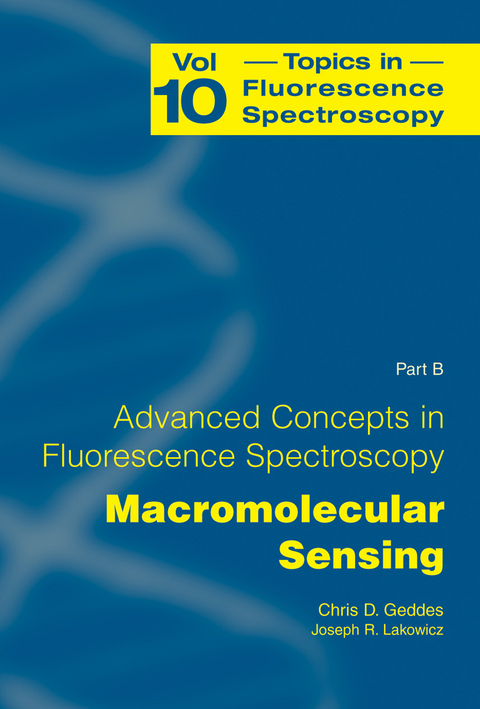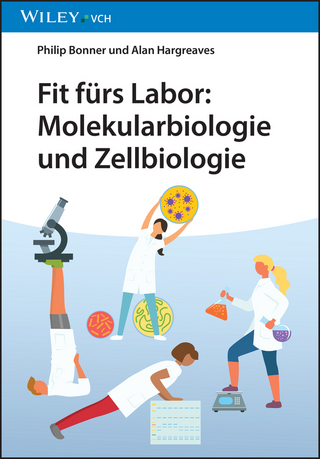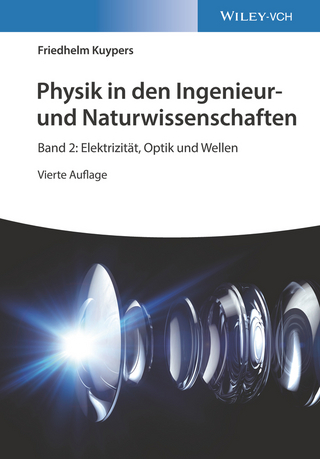
Advanced Concepts in Fluorescence Sensing
Part B: Macromolecular Sensing
Seiten
2005
Springer-Verlag New York Inc.
978-0-387-23644-5 (ISBN)
Springer-Verlag New York Inc.
978-0-387-23644-5 (ISBN)
Fluorescence has become the dominant tool in biotechnology and medical imaging. Encompassing a range of fluorescence sensing techniques, this work contains some chapters that deal with small molecule sensors, such as for anions, cations, and CO2, while others summarize advances in protein-based and macromolecular sensors.
Over the last decade, fluorescence has become the dominant tool in biotechnology and medical imaging. These exciting advances have been underpinned by the advances in time-resolved techniques and instrumentation, probe design, chemical / biochemical sensing, coupled with our furthered knowledge in biology.
Complementary volumes 9 & 10, Advanced Concepts of Fluorescence Sensing: Small Molecule Sensing and Advanced Concepts of Fluorescence Sensing: Macromolecular Sensing, aim to summarize the current state of the art in fluorescent sensing. For this reason, Drs. Geddes and Lakowicz have invited chapters, encompassing a broad range of fluorescence sensing techniques. Some chapters deal with small molecule sensors, such as for anions, cations, and CO2, while others summarize recent advances in protein-based and macromolecular sensors. The Editors have, however, not included DNA or RNA based sensing in this volume, as this were reviewed in Volume 7 and is to be the subject of a more detailed volume in the near future.
Over the last decade, fluorescence has become the dominant tool in biotechnology and medical imaging. These exciting advances have been underpinned by the advances in time-resolved techniques and instrumentation, probe design, chemical / biochemical sensing, coupled with our furthered knowledge in biology.
Complementary volumes 9 & 10, Advanced Concepts of Fluorescence Sensing: Small Molecule Sensing and Advanced Concepts of Fluorescence Sensing: Macromolecular Sensing, aim to summarize the current state of the art in fluorescent sensing. For this reason, Drs. Geddes and Lakowicz have invited chapters, encompassing a broad range of fluorescence sensing techniques. Some chapters deal with small molecule sensors, such as for anions, cations, and CO2, while others summarize recent advances in protein-based and macromolecular sensors. The Editors have, however, not included DNA or RNA based sensing in this volume, as this were reviewed in Volume 7 and is to be the subject of a more detailed volume in the near future.
Protein-Based Biosensors with Polarization Transduction.- GFP Sensors.- Fluorescent Saccharide Sensors.- Fluorescent Pebble Nano-Sensors and Nanoexplorers for Real-Time Intracellular and Biomedical Applications.- Aptamers as Emerging Probes for Macromolecular Sensing.- Molecular Imprinting.- Excimer Sensing.- Lifetime Based Sensors / Sensing.
| Reihe/Serie | Topics in Fluorescence Spectroscopy ; 10 |
|---|---|
| Zusatzinfo | 3 Illustrations, color; 143 Illustrations, black and white; XIII, 300 p. 146 illus., 3 illus. in color. |
| Verlagsort | New York, NY |
| Sprache | englisch |
| Maße | 165 x 248 mm |
| Themenwelt | Naturwissenschaften ► Biologie ► Allgemeines / Lexika |
| Naturwissenschaften ► Chemie ► Analytische Chemie | |
| Naturwissenschaften ► Physik / Astronomie ► Angewandte Physik | |
| ISBN-10 | 0-387-23644-9 / 0387236449 |
| ISBN-13 | 978-0-387-23644-5 / 9780387236445 |
| Zustand | Neuware |
| Informationen gemäß Produktsicherheitsverordnung (GPSR) | |
| Haben Sie eine Frage zum Produkt? |
Mehr entdecken
aus dem Bereich
aus dem Bereich
Berufsbilder von und für Biologen und Biowissenschaftler
Buch | Softcover (2024)
Verband Biologie, Biowiss. u. Biomedizin in Dtl. e.V. (Verlag)
16,80 €
Buch | Softcover (2024)
Wiley-VCH (Verlag)
39,90 €
Band 2: Elektrizität, Optik und Wellen
Buch | Softcover (2022)
Wiley-VCH (Verlag)
39,90 €


